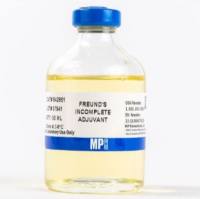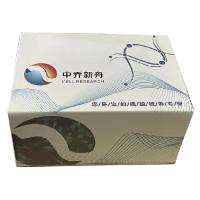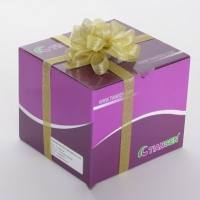PCR佐剂手册
互联网
A variety of PCR additives and enhancing agents have been used to increase the yield, specificity and consistency of PCR reactions. Whilst these additives may have beneficial effects on some amplifications it is impossible to predict which agents will be useful in a particular context and therefore they must be empirically tested for each combination of template and primers. Some of the more popular of these additives are listed in the table below along with references describing their use.
|
Additive
|
References
|
|
DMSO
|
Amplifications 5 : 16
|
|
Betaine
|
Biochemistry 32 : 137
|
|
Formamide
|
Nucleic Acids Research 18 : 7465
|
|
Non-ionic detergents
|
Biotechniques 12 : 332
|
|
TMAC
|
Nucleic Acids Research 18 : 4953
|
|
7-deaza-2' -deoxyguanosine
|
Nucleic Acids Research 16 : 3360
|
|
BSA
|
Applied and environmental microbiology 62 :1102-1106
|
|
T4 gene 32 protein
|
Applied and Environmental Microbiology 62 :1102-1106
|
DMSO at 2-10% may be necessary for amplification of some templates, however 10% DMSO can reduce Taq polymerase activity by up to 50% (Gelfand 1989) so it should not be used routinely. DMSO is thought to reduce secondary structure and is particularly useful for GC rich templates.
A number of PCR additives are now comercially available, however the identities of these agents are not usually revealed by their suppliers. Frackman et al.( 1998) have demonstrated (using NMR analysis) that the PCR additive provided by QIAGEN in their PCR core kit (Q-Solution) and that provided by CLONTECH in the Advantage-GC cDNA PCR kit is in fact Betaine which is available at a fraction of the cost as a 5M solution from Sigma-Aldrich (cat. # B 0300), but be sure to use Betaine or Betaine (mono)hydrate and not Betaine HCl. Other products suspected of consisting largely of Betaine include the "GC-RICH solution enhancer" from Roche, "TaqMaster enhancer" from Eppendorf, "GC-melt" from Clontech and "FailSafe enhancer" (formerly "MasterAmp PCR Enhancment Technology") from Epicentre (Weissensteiner, pers. comm.). Betaine is generally used at a final concentration of 1.0-1.7M.
Formamide is generally used at 1-5% and 10% formamide is reported (Gelfand 1989) to have no effect on the activity of Taq polymerase, however, Sarkar et al. (1990) (see table for ref.) found that 1.25% formamide worked as well as 2.5% and 5%, and no amplification was seen at 10% so it seems prudent not to use concentrations of formamide greater than strictly necessary for optimal amplification.
Non-ionic detergents stabilise Taq polymerase and may also supress the formation of secondary structure. 0.1-1% Triton X-100, Tween 20 or NP-40 may increase yield but may also increase non-specific amplification. As little as 0.01% SDS contamination of the template DNA (left-over from the extraction procedure) can inhibit PCR by reducing Taq polymerase activity to as low as 10%, however, inclusion of 0.5% Tween-20 or -40 will effectively neutralise this effect (Gelfand 1989).
TMAC is generally used at a final concentration of 15-100mM to eliminate non-specific priming. TMAC has is also used to reduce potential DNA-RNA mismatch (Proceedings of the National Academy of Sciences of the United States of America 82 : 1585) and improve the stringency of hybridization reactions (Nucleic Acids Research 16 : 4637).
The base analogue 7-deaza-2'-deoxyguanosine may facilitate amplification of templates with stable secondary structures when used in place of dGTP in a ratio of 3: 1, 7-deaza-2'-deoxyguanosine: dGTP.
BSA has proven particularly useful when attempting to amplify ancient DNA or templates which contain PCR inhibitors such as melanin.
REFERENCES
Frackman, S., Kobs, G., Simpson, D. and Storts, D. 1998. Betaine and DMSO: enhancing agents for PCR. Promega Notes 65 : 27.
Gelfand, D. H. 1988. In Erlich, H. A. (ed.) PCR Technology . p.17 . Stockton Press, NY.
PCR方法相关产品:
- 电泳设备
- 紫外设备
- 普通PCR仪
- 定量PCR仪
-
PCR/RT-PCR/qPCR试剂
-
PCR引物
-
PCR试剂
-
PCR对照
-
特异性PCR试剂盒
-
PCR克隆试剂盒
-
RNA
-
RNase检测/去除
-
RT-PCR试剂
-
RT-PCR标准品
-
定量PCR试剂
-
定量PCR标记
-
总RNA分离纯化盒
-
PCR产物纯化
-
核酸酶
-
聚合酶
-
反转录酶









